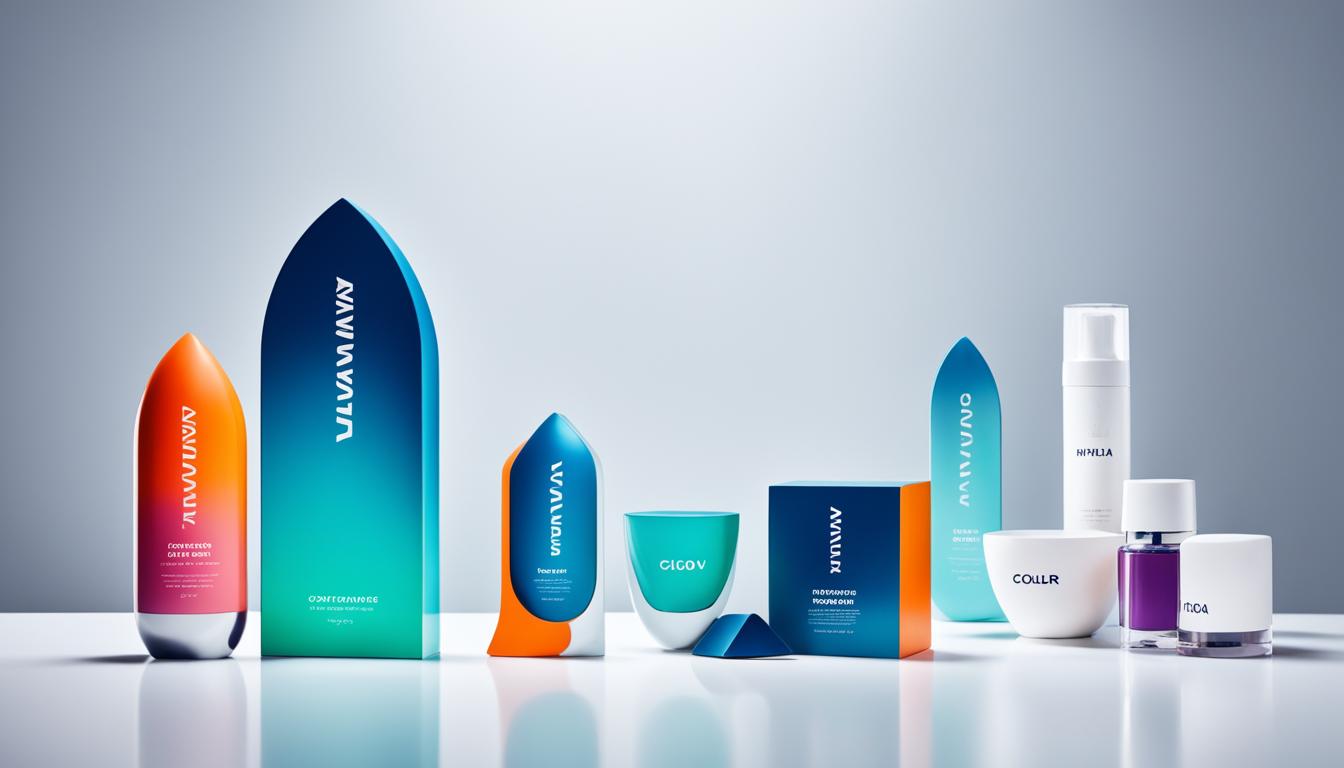
Messaging that Resonates: Aligning with Your Customers’ Values

Have you ever wondered how some brands effortlessly connect with their customers? How they are able to create messaging that not only captures attention but also resonates with their target audience? The secret lies in aligning your brand messaging with your customers’ values.
Understanding your customers’ values is essential for effective communication. When your brand aligns with what your customers care about, it creates a powerful emotional connection and establishes a sense of authenticity. But how do you uncover these values? How do you ensure that your messaging aligns with what truly matters to your customers?
In this article, we will explore the importance of aligning your brand messaging with customer values. We will delve into the process of understanding your customers’ values, the impact of authenticity on brand messaging, and how to create a messaging framework that resonates with your target audience. Get ready to discover the key to messaging that truly connects with your customers!
Key Takeaways:
- Aligning your brand messaging with your customers’ values builds emotional connections and authenticity.
- Understanding your customers’ values involves research and active listening.
- Crafting a messaging framework helps ensure consistent and resonant communication.
- Adapting messaging to different channels optimizes reach and engagement.
- Regularly updating and improving messaging keeps your brand relevant.
Importance of Authenticity in Brand Messaging
In a world where customers are constantly bombarded with advertising, it has become more important than ever for brands to prioritize authenticity in their messaging. Authenticity is not just about aligning brand messaging with customer values; it goes beyond that. Authenticity is about consistently demonstrating that your brand embodies those values in every interaction and engagement.
Authenticity builds trust, credibility, and emotional connections with your audience. When customers perceive your brand as genuine and authentic, they are more likely to develop a connection and loyalty towards your brand. Authentic messaging goes beyond surface-level marketing tactics and focuses on building meaningful relationships with your audience.
“Authenticity is the daily practice of letting go of who we think we’re supposed to be and embracing who we actually are.”
Creating an authentic brand messaging strategy requires careful consideration of your brand values and ensuring that they align with the values of your target audience. It involves staying true to those values and consistently delivering messaging that resonates with your audience on an emotional level.
An authentic brand messaging strategy can lead to a range of benefits:
- Building trust: Authenticity helps foster trust between your brand and your audience. When customers believe that your brand is honest and genuine, they are more likely to trust your products or services.
- Establishing credibility: Authentic messaging establishes your brand’s credibility by showcasing a consistent and reliable brand identity. This can be achieved by delivering on your promises and consistently exemplifying your brand values.
- Fostering emotional connections: Authenticity helps create an emotional connection between your brand and your audience. When customers feel a genuine connection, they are more likely to form a long-lasting relationship with your brand.
- Driving customer loyalty: Authentic brands inspire customer loyalty and advocacy. When customers feel a strong connection with your brand, they are more likely to become repeat customers and recommend your brand to others.
An important aspect of authenticity is addressing any inconsistencies between what your brand promises and what it actually delivers. It’s crucial to ensure that your actions align with your messaging. This can include demonstrating social responsibility, providing exceptional customer service, or being transparent about your business practices.
By prioritizing authenticity in your brand messaging, you can create a genuine connection with your audience, build trust and credibility, and ultimately foster long-term customer loyalty and advocacy.
Understanding Your Customer’s Values
To effectively align your brand messaging with your customers’ needs and desires, it’s crucial to have a deep understanding of their values. Values are the core beliefs that guide individuals’ behaviors and decision-making processes, and they often serve as a reflection of their identity. When you can tap into your customers’ values, you can create a strong emotional attachment to your brand, making them see it as an extension of their own identity.
So how do you gain insight into your customers’ values? It starts with research and active listening. Traditional market research methods, such as surveys, interviews, and focus groups, can provide valuable data on what matters most to your target audience. Additionally, social listening allows you to monitor online conversations and engagement to uncover the values and emotions that drive your customers.
By understanding your customers’ values, you can craft messages that align with their beliefs and aspirations. When customers see that your brand shares their values, they connect with your brand on a deeper level, forming an emotional attachment that goes beyond a simple transaction. This emotional bond not only leads to increased loyalty but also encourages customers to advocate for your brand among their peers.
To illustrate this point further, consider the example of a sustainable clothing brand. By understanding that their target audience values environmentally-friendly practices, fair labor, and ethical sourcing, the brand can tailor their messaging to highlight these values. This not only appeals to their customers’ sense of identity but also creates an emotional connection that drives repeat purchases and brand loyalty.
“Customers form emotional attachments with brands when they see their values reflected in the brand’s messaging and actions. This emotional attachment leads to increased loyalty and advocacy.”
To summarize, understanding your customers’ values is crucial for creating messaging that resonates on a deeper level. By aligning your brand with your customers’ values, you can forge emotional connections and build a loyal customer base that sees your brand as an integral part of their identity.

The Process of Aligning Your Brand
Aligning your brand with customer values is a continuous journey that involves incorporating insights into various aspects of your business. By seamlessly integrating your brand identity, mission statement, company culture, product design, customer service, and social responsibility initiatives with customer values, you can establish a strong connection with your target audience.
To begin this alignment process, start by revisiting and refining your mission statement. Your mission statement should embody the core values that resonate with your audience. Make sure it clearly communicates your brand’s purpose and the value it offers to customers.
Next, reflect those values in your company culture. Foster an environment that upholds and represents the principles and beliefs of both your brand and your customers. By fostering a culture aligned with customer values, you create a positive and authentic experience that resonates with your audience.
Designing products or services that align with customer values is another crucial step in this process. Seek to understand your customers’ needs, preferences, and desires, and develop offerings that address and fulfill them. By putting the customer at the center of your product design, you create meaningful experiences that align with their values and meet their expectations.
Providing exceptional customer service is an integral part of aligning your brand with customer values. Ensure that every interaction, whether in-person, online, or over the phone, reflects your brand’s commitment to understanding and meeting the unique needs of each customer. Such personalized service fosters trust, builds loyalty, and reinforces the alignment between your brand and customer values.
Lastly, embrace social responsibility initiatives that connect with your audience. Actively engage in ethical practices, sustainability efforts, and community involvement that align with your customers’ values. By demonstrating your commitment to social responsibility, you show your customers that your brand shares their concerns and actively contributes to a better world.
Key Takeaways:
- Alignment of brand identity, mission statement, company culture, product design, customer service, and social responsibility initiatives is essential for connecting with your customers.
- Start by revisiting and refining your mission statement to ensure it resonates with your audience’s values.
- Create a company culture that reflects and upholds the principles and beliefs of your brand and your customers.
- Design products or services that align with customer values to meet their needs and preferences.
- Provide exceptional customer service that demonstrates your commitment to understanding and meeting the unique needs of each customer.
- Embrace social responsibility initiatives that connect with your audience and contribute to a better world.
By aligning your brand with customer values, you establish a genuine connection that fosters loyalty, enhances brand perception, and drives long-term success.
| Brand Identity | Mission Statement | Company Culture | Product Design | Customer Service | Social Responsibility |
|---|---|---|---|---|---|
| Represents the unique characteristics, values, and image of your brand. | Defines the purpose, values, and goals of your brand. | Encompasses the beliefs, behaviors, and practices within your organization. | Shapes the features, functionality, and aesthetics of your products or services. | Involves delivering exceptional experiences that meet customer needs and expectations. | Incorporates ethical practices, sustainability efforts, and community involvement. |
Creating a Messaging Framework
A successful messaging framework plays a crucial role in crafting consistent and impactful messages across different channels, audiences, and communication purposes. It serves as a strategic guide, outlining key messages, themes, stories, and proof points that align with your brand values and identity.
Through a well-defined messaging framework, you can ensure that your brand message is clear, coherent, and resonates with your target audience. This framework acts as a blueprint for effective communication, helping you convey your brand’s unique value proposition and establish a strong emotional connection with your customers.
To create a messaging framework, consider utilizing tools such as message hierarchy, message matrix, or message architecture. These tools help you organize and structure your key messages, themes, and stories, allowing for consistent messaging across various touchpoints.
Key messages: These are the core statements that encapsulate the essence of your brand and communicate your unique selling points. They should be concise, memorable, and aligned with your brand values.
Themes: Themes provide a broader narrative that connects your key messages and reinforces your brand’s positioning. They can be tailored to specific campaigns, target audience segments, or communication channels.
Stories: Stories are powerful tools for conveying your brand’s values and creating emotional connections with your audience. They add depth and authenticity to your messaging, making it more relatable and engaging.
Proof points: Proof points are facts, statistics, or evidence that support your key messages and build credibility for your brand. They demonstrate the validity and impact of your products, services, or solutions.
“Crafting a strong messaging framework is like laying the foundation for effective communication. It ensures that every message you deliver is consistent, resonates with your audience, and supports your brand’s values and identity.”
By creating a messaging framework, you can empower your brand with a strategic and cohesive approach to communication. It enables you to deliver the right message, to the right audience, through the right channels at the right time.
Example Messaging Framework
| Key Messages | Themes | Stories | Proof Points |
|---|---|---|---|
| Achieving Financial Independence | Empowerment, Financial Security | Customer Success Stories | 88% of customers increased savings in 6 months* |
| Making Healthy Lifestyle Choices | Wellness, Self-care | Inspiring Transformation Stories | Research-backed benefits of our products* |
| Unleashing Creativity | Innovation, Expression | Behind-the-Scenes Insights | Industry Awards and Recognition |

Adapting Messaging to Different Channels
When it comes to reaching your audience effectively, adapting your messaging to different channels is key. Each channel has its own unique features, functions, and norms that need to be considered in order to tailor your messaging for maximum impact. By understanding your audience’s preferences and interaction styles on each platform, you can ensure that your message resonates with them and drives engagement.
Channel-Specific Messaging
One size does not fit all when it comes to messaging across channels. What works on social media may not be as effective in an email campaign or on your website. To optimize your messaging for different channels, it’s important to create channel-specific messages that speak directly to the audience using that platform.
“The key to successful messaging across channels is to meet your audience where they are and speak their language.”
For example, on social media platforms like Facebook or Instagram, where visuals play a significant role, using eye-catching images or videos can capture attention and drive engagement. On the other hand, for more formal channels like email or your website, a well-crafted written message with a clear call to action might be more effective. Understanding the nuances of each channel will enable you to adapt your messaging accordingly.
Audience Preferences Matter
Your audience’s preferences should drive the way you adapt your messaging for different channels. By taking the time to research and understand your target audience, you can gain insights into their communication style, content preferences, and the platforms they most frequently use. This information will help you align your messaging with their preferences and ensure it stands out in a cluttered digital landscape.
For example, if your audience consists primarily of young professionals who are active on social media, you may want to focus your messaging efforts on platforms like LinkedIn or Twitter. On the other hand, if your audience is more likely to engage with email or prefers to consume long-form content, you can tailor your messaging accordingly.
Tools to Optimize Messaging
Several tools can assist you in optimizing your messaging for different channels:
- Channel Matrix: Use a channel matrix to map out the features, functions, and norms of each channel. This will help you identify the unique aspects of each platform that need to be considered when adapting your messaging.
- Channel Strategy: Develop a channel strategy that outlines your approach for each platform. This will guide you in creating channel-specific messages and ensure consistency in your overall messaging efforts.
- Channel Plan: Create a detailed channel plan that includes the specific messages, visuals, and tactics you will use on each platform. This will help you stay organized and maintain a cohesive brand presence across channels.
By utilizing these tools, you can streamline the process of adapting your messaging to different channels and ensure that you are effectively reaching your target audience.
“Remember, successful messaging across channels requires a deep understanding of your audience and a tailored approach that speaks directly to their preferences.”
Monitoring and Measuring Messaging Effectiveness
Monitoring and measuring the effectiveness of your brand messaging is crucial for understanding the impact it has on your audience. By collecting and analyzing data from various sources, such as web analytics, social media analytics, surveys, and customer reviews, you can gain valuable insights into how your messaging aligns with your target audience’s values and perceptions.
Why is monitoring messaging important?
Monitoring your messaging allows you to track how well your brand resonates with your audience and identify areas for improvement. It helps you understand whether your messages are reaching the right people in the right way and whether they are effectively conveying your brand’s values and offerings.
How can you measure the impact of your messaging?
Measuring the impact of your messaging involves assessing its influence on stakeholder perceptions and actions. Tools such as sentiment analysis, reputation score, and net promoter score can provide you with valuable data and insights to evaluate the effectiveness of your messaging efforts.
Why is data analysis important in monitoring and measuring messaging effectiveness?
Data analysis plays a crucial role in understanding the success of your messaging strategies. By utilizing data analysis techniques, you can identify trends, patterns, and key performance indicators that help you make informed decisions and optimize your messaging for better results.
By continuously monitoring and measuring your messaging effectiveness through data analysis, you can make data-driven decisions to refine your brand messaging, improve audience engagement, and drive desired actions.
| Data Sources | Analysis Techniques |
|---|---|
| Web analytics | Conversion rate analysis, bounce rate analysis |
| Social media analytics | Engagement rate analysis, sentiment analysis |
| Surveys | Quantitative analysis, qualitative analysis |
| Customer reviews | Review sentiment analysis, feedback categorization |
Table: Data sources and analysis techniques for monitoring messaging effectiveness

Monitoring and measuring the impact of your brand messaging empowers you to make data-driven decisions, refine your messaging strategies, and cultivate stronger connections with your audience. By analyzing the data collected from various sources, you can gain valuable insights into the effectiveness of your messaging efforts and make informed decisions to drive your brand’s success.
Updating and Improving Messaging
Messaging is not a one-time endeavor; it requires regular review and refinement to ensure its effectiveness. By updating your messaging, refining your approach, and testing different messages, formats, and channels, you can improve your communication and better connect with your audience.
Updating messaging involves revisiting and refreshing your brand values, mission, and messaging framework. As your business evolves, it is essential to align your messaging with any changes in your company’s direction or market position. Keep in mind that updating your messaging should be done strategically to maintain consistency while adapting to new opportunities and challenges.
Refining messaging entails fine-tuning your messages to better resonate with your target audience. This involves analyzing customer feedback, conducting market research, and listening to your stakeholders to identify areas for improvement. Look for opportunities to clarify your messaging, enhance its emotional appeal, and align it more closely with your customers’ values and desires.
Testing messages is crucial to ensure that your communication resonates with your audience. Experiment with different messages, formats, and channels to determine what works best for your brand. A/B testing, focus groups, and surveys can provide valuable insights into the effectiveness of your messaging, allowing you to make data-driven decisions and refine your approach.
Seeking feedback from your stakeholders is equally important. Engage with your customers, employees, and partners to gather their input on your messaging. Their perspectives and experiences can offer valuable insights and help you identify blind spots or areas where your messaging may fall short.
To summarize, updating and improving your messaging involves regularly reviewing and refining your approach. By updating your values, revisiting your messaging framework, testing different messages, and seeking feedback, you can optimize your communication and better engage with your target audience.
Understand Your Target Audience
When it comes to building a successful brand, understanding your target audience is crucial. By identifying their needs, wants, and desires, you can create tailored messaging and marketing campaigns that truly resonate with them. This not only helps you connect with your audience on a deeper level but also increases the relevance and effectiveness of your brand.
One effective way to understand your target audience is by utilizing tools such as the Value Proposition Canvas, Vision Statement, or Value Matrix. These tools provide valuable insights into your audience’s motivations, pain points, and aspirations. By analyzing this information, you can develop messaging that speaks directly to their needs and desires, making your brand more compelling and engaging.
By understanding your target audience, you can craft marketing campaigns that grab their attention, fulfill their desires, and ultimately drive conversions. Whether it’s through social media, email marketing, or traditional advertising channels, your messaging will resonate with your audience and inspire them to take action.
Key Takeaways:
- Identify the needs, wants, and desires of your target audience.
- Use tools like the Value Proposition Canvas, Vision Statement, or Value Matrix to gain insights into your audience’s motivations and aspirations.
- Create tailored messaging and marketing campaigns that speak directly to your audience’s needs and desires.
- Connect with your audience on a deeper level and increase the relevance and effectiveness of your brand.
Understanding your target audience is a fundamental step towards building a successful brand. By crafting messaging and marketing campaigns that truly resonate with them, you can establish a strong connection and drive the desired outcomes for your business.
| Needs | Wants | Desires |
|---|---|---|
| Reliability | Convenience | Exclusivity |
| Quality | Value for Money | Success |
| Efficiency | Innovation | Freedom |
Keep Up with Trends
Staying relevant in today’s rapidly evolving business landscape requires keeping up with the latest trends. This applies not only to your industry but also to broader market trends that can impact your brand and target audience. By staying informed and adapting your brand as the business evolves, you can ensure that you remain current and connected with your customers.
Keeping up with industry trends allows you to anticipate changes, identify emerging opportunities, and stay ahead of the competition. It enables you to align your brand with the evolving needs and preferences of your target audience, ensuring that your messaging and offerings are relevant and appealing.
One crucial aspect of staying up to date with trends is monitoring what other brands in your industry are doing. By paying attention to their strategies, initiatives, and brand updates, you can gather valuable insights that can inform your own approach. This doesn’t mean copying what others are doing, but rather identifying best practices, spotting gaps in the market, and finding unique ways to differentiate your brand.
“Keeping up with trends helps you anticipate change, stay relevant, and meet the evolving needs of your audience.”
Adapting your brand as the business evolves involves making necessary adjustments to your brand identity, logo, website design, and other visual elements that represent your brand. This ensures that your brand remains fresh, modern, and in line with current design trends.
Another important aspect of keeping up with trends is embracing new technologies and digital platforms that are gaining popularity. As consumer behavior and preferences shift towards digital channels, it’s essential to evaluate how these changes impact your brand’s online presence. This may involve optimizing your website for mobile devices, leveraging social media platforms, or exploring new communication channels that your target audience is using.
Stay Ahead of the Curve
To keep up with trends effectively, consider implementing the following practices:
- Stay informed: Regularly read industry publications, attend conferences, and follow thought leaders in your field to stay updated on the latest trends and insights.
- Monitor consumer behavior: Keep a close eye on changing consumer behavior and preferences to identify emerging trends that could impact your brand.
- Engage with your audience: Actively listen to your customers’ feedback and engage with them on social media to understand their evolving needs and expectations.
- Experiment and test: Be open to experimenting with new ideas, strategies, and technologies to stay at the forefront of innovation and adapt quickly to changing trends.
The image above represents the dynamic nature of industry trends. Adapting to these trends is crucial to maintaining the relevance and competitiveness of your brand.
In conclusion, it is essential for brands to keep up with trends both within their industry and in the broader market. By staying informed, monitoring competitors, adapting to changes, and embracing new technologies, you can ensure that your brand remains relevant and connected with your target audience.
Stay True to Core Values
As you evolve your brand and adapt to changing market trends, it is essential to stay true to your core values. Your core values are the guiding principles that shape your brand identity and contribute to your overall business goals. By remaining aligned with your core values, you maintain consistency, credibility, and a strong brand identity that resonates with your target audience.
Staying true to your core values ensures that your brand remains authentic and genuine, which is vital in building trust and loyalty with your customers. When your customers align with your values, they feel a deeper connection to your brand and are more likely to become loyal advocates.
Consistently upholding your core values also helps you differentiate yourself from competitors and establish a unique position in the market. By staying true to what your brand stands for, you create a clear and compelling brand story that engages and inspires your audience.
Moreover, staying aligned with your core values allows you to build a strong internal culture within your organization. When your employees embody the same values that your brand represents, they become ambassadors who bring your brand to life and deliver exceptional customer experiences.
Example Core Values
Core Value Description Innovation Constantly striving for creative solutions and pushing boundaries. Sustainability Ensuring long-term environmental and social responsibility. Integrity Always acting ethically and transparently in business practices. Customer-centricity Putting the needs and satisfaction of customers first. Teamwork Collaborating and supporting each other to achieve common goals.
By staying true to your core values, you not only maintain a consistent brand image but also establish a strong foundation for long-term success. As you navigate the ever-changing business landscape, let your core values serve as a compass that guides your decisions and actions, ensuring that every aspect of your brand aligns with your identity, resonates with your audience, and contributes to your business goals.
Conclusion
Aligning your brand messaging with the values of your customers is an essential strategy in today’s competitive marketplace. By doing so, you can build strong emotional connections, foster customer loyalty, generate effective word-of-mouth marketing, and position your brand more strongly in the market.
To achieve long-term success, it is crucial to maintain relevance, authenticity, and consistently deliver messaging that resonates with your customers’ values. By understanding your target audience and crafting messages that address their needs, wants, and desires, you can create a deep emotional connection with them. This emotional connection forms the foundation of customer loyalty and drives customer advocacy, leading to increased market position and business growth.
Remember, in a saturated market, your brand messaging should stand out by reflecting your customers’ values and aspiration. By staying true to your core values and continuously aligning your messaging with those values, you can build trust, maintain consistency, and create a strong brand identity that resonates with your target audience. Strive to be authentic, relevant, and consistent in your messaging to establish a lasting emotional bond with your customers, ultimately securing your market position for the long term.






























